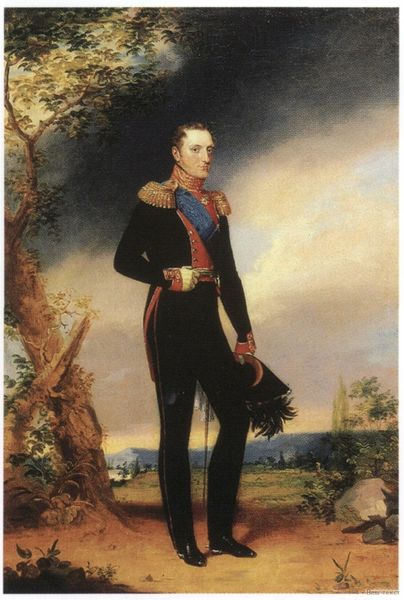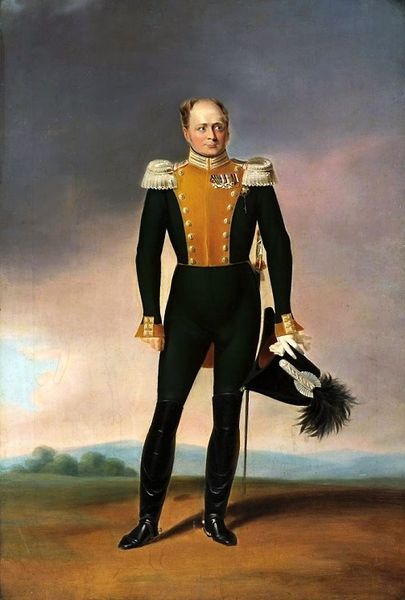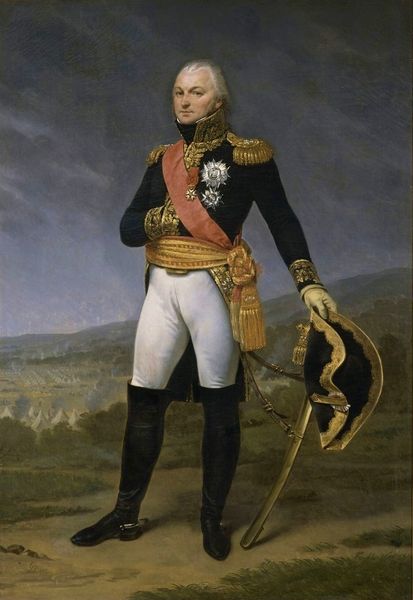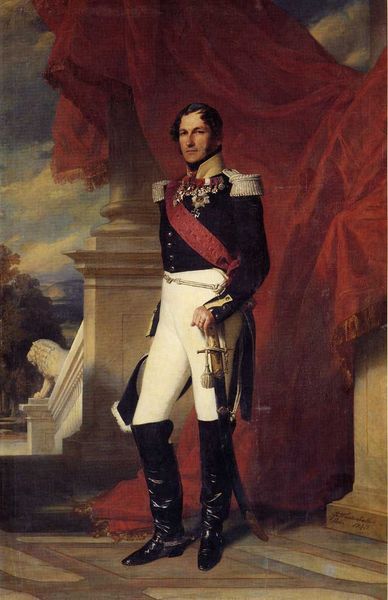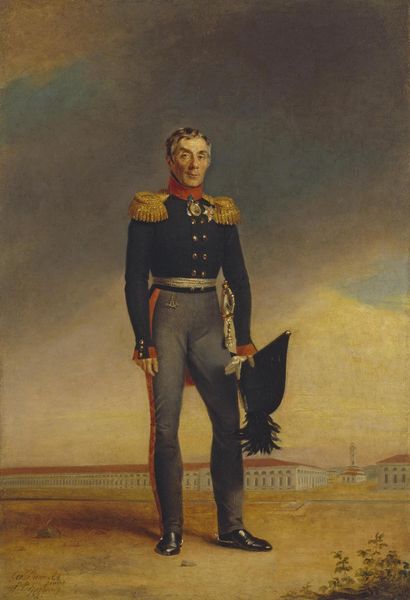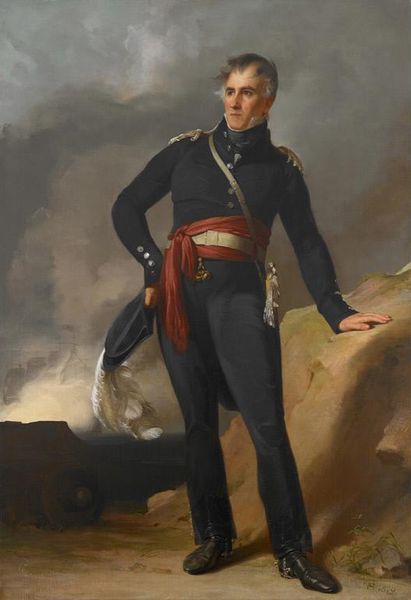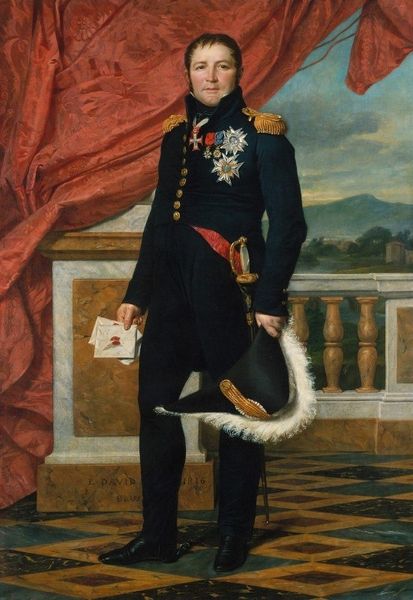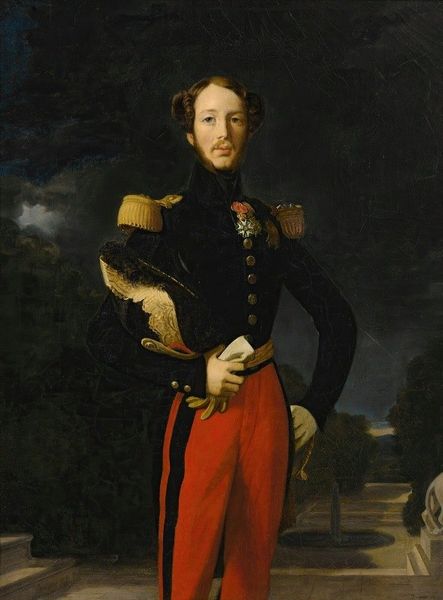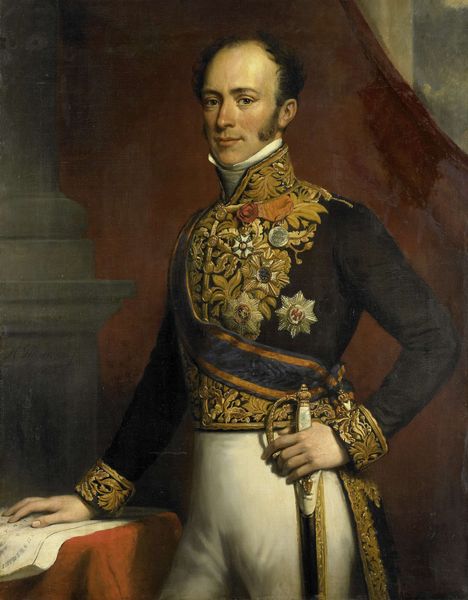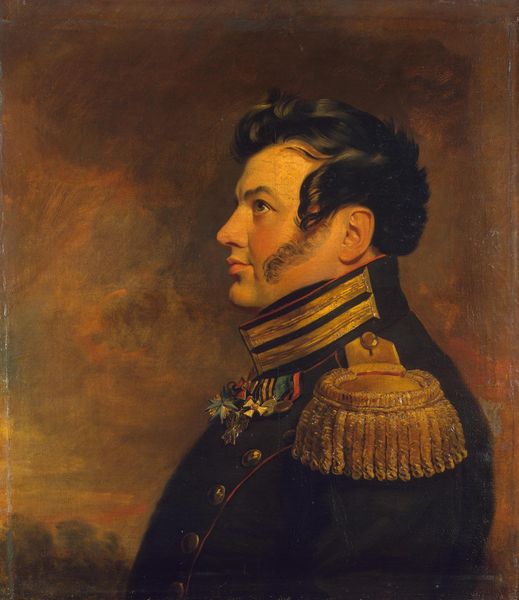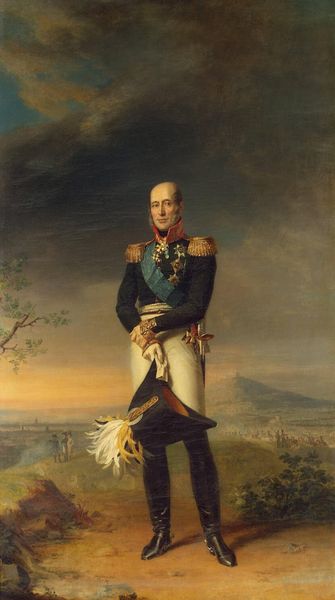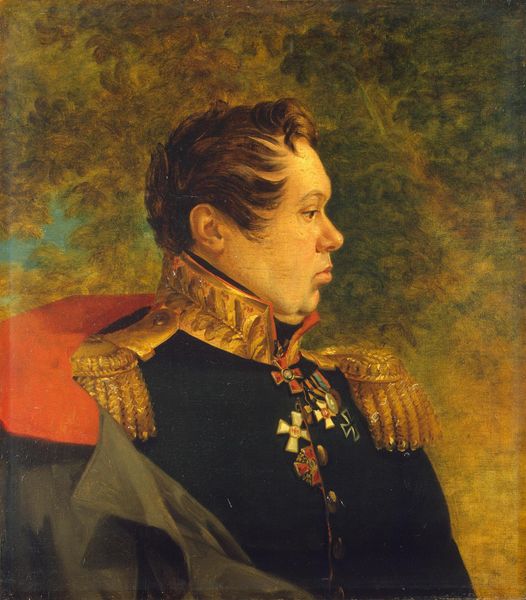
oil-paint
#
portrait
#
oil-paint
#
oil painting
#
romanticism
#
history-painting
#
portrait art
Copyright: Public domain
Curator: Here we have a portrait of Grand Duke Nikolai Pavlovich, painted in 1821 by George Dawe. The piece exemplifies early 19th-century Russian Romanticism, rendered in oil. Editor: My initial impression is one of subdued authority. The muted palette and slightly melancholic pose contribute to a sense of introspective power, not overt bravado. It's intriguing. Curator: Indeed. Dawe was commissioned to create portraits of key figures in the Russian military and aristocracy, many of which were intended to bolster the image of the Tsarist regime. This particular portrait serves as an early representation of Nikolai, prior to his ascension to the throne as Tsar Nicholas I. The Romantics, even in Russia, were caught between expressions of revolution and order, or the nostalgic projection thereof. Editor: Absolutely, the symbols work on multiple levels. We see Nikolai in full military regalia, suggesting duty and command, yet the softer, landscape background—the tree and vaguely stormy sky—imbues the piece with a certain vulnerability or perhaps even an intimation of mortality. The helmet he carries suggests action and bravery, yet its careful placement implies contemplation more than direct engagement. Curator: Note the deliberate positioning against that backdrop. It aligns with the era's preoccupation with aligning rulers with images of imperial authority. Editor: He's holding a sword. Symbols are crucial. I can tell the cultural implications are heavy in this portrait. The uniform’s epaulettes almost resemble wings, yet the darker color schemes make him an angel of vengeance, the sort of thing that will stick in the Russian soul long after it departs. The piece masterfully balances this iconic military portrayal with softer emotional and spiritual tones that humanize the future Tsar. Curator: Considering Dawe’s prolific output of portraits of military figures during this period, it's important to consider how this image contributed to Nicholas's early image as a leader. He went on to suppress liberalism and embrace a more autocratic style, thus this imagery carries an especially tragic undertone in retrospect. Editor: Fascinating how art can freeze a moment, imbued with layers of context. Curator: Absolutely, thank you for that. Editor: A genuine pleasure.
Comments
No comments
Be the first to comment and join the conversation on the ultimate creative platform.
